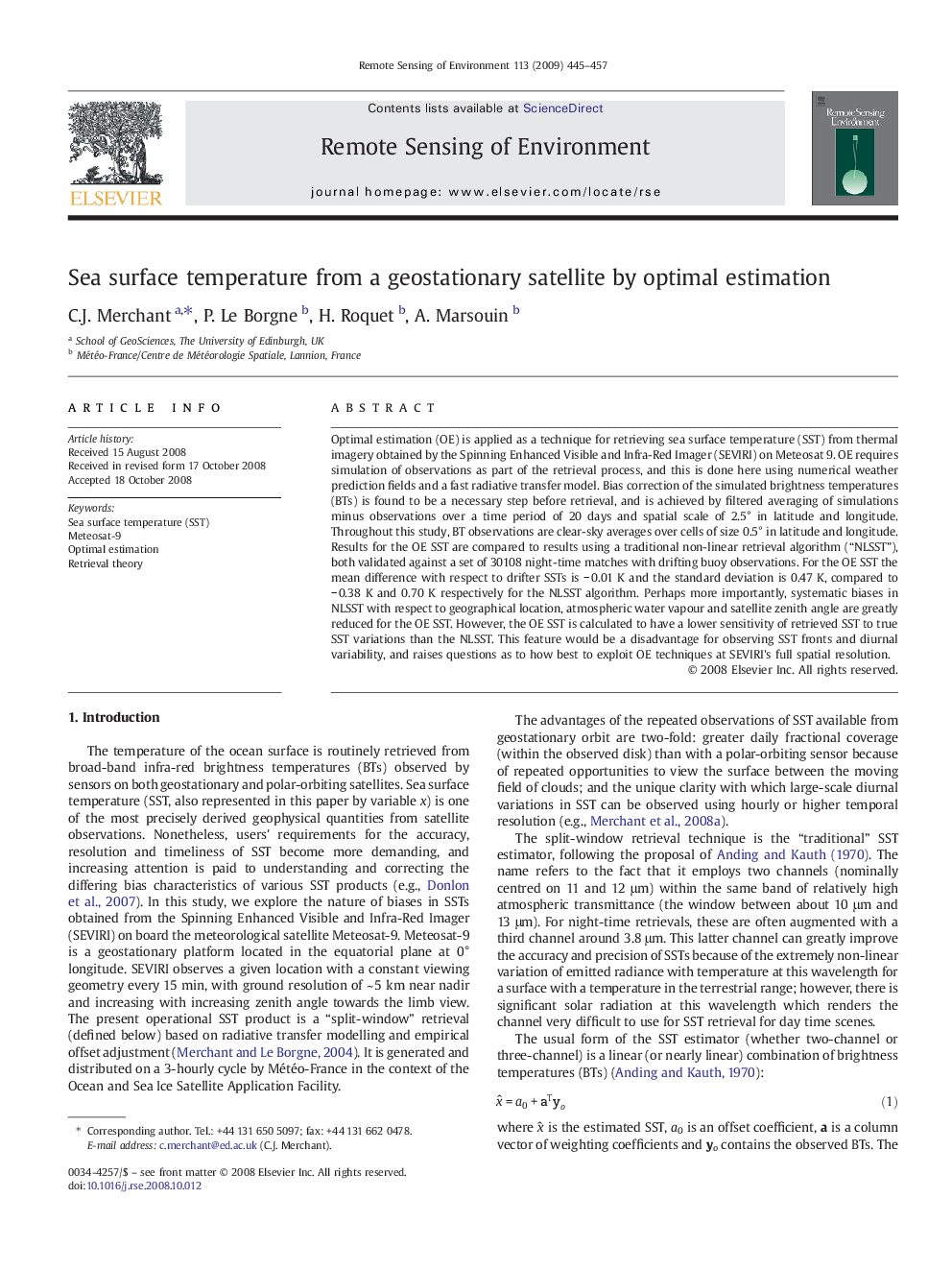| Article ID | Journal | Published Year | Pages | File Type |
|---|---|---|---|---|
| 4460331 | Remote Sensing of Environment | 2009 | 13 Pages |
Optimal estimation (OE) is applied as a technique for retrieving sea surface temperature (SST) from thermal imagery obtained by the Spinning Enhanced Visible and Infra-Red Imager (SEVIRI) on Meteosat 9. OE requires simulation of observations as part of the retrieval process, and this is done here using numerical weather prediction fields and a fast radiative transfer model. Bias correction of the simulated brightness temperatures (BTs) is found to be a necessary step before retrieval, and is achieved by filtered averaging of simulations minus observations over a time period of 20 days and spatial scale of 2.5° in latitude and longitude. Throughout this study, BT observations are clear-sky averages over cells of size 0.5° in latitude and longitude. Results for the OE SST are compared to results using a traditional non-linear retrieval algorithm (“NLSST”), both validated against a set of 30108 night-time matches with drifting buoy observations. For the OE SST the mean difference with respect to drifter SSTs is − 0.01 K and the standard deviation is 0.47 K, compared to − 0.38 K and 0.70 K respectively for the NLSST algorithm. Perhaps more importantly, systematic biases in NLSST with respect to geographical location, atmospheric water vapour and satellite zenith angle are greatly reduced for the OE SST. However, the OE SST is calculated to have a lower sensitivity of retrieved SST to true SST variations than the NLSST. This feature would be a disadvantage for observing SST fronts and diurnal variability, and raises questions as to how best to exploit OE techniques at SEVIRI's full spatial resolution.
